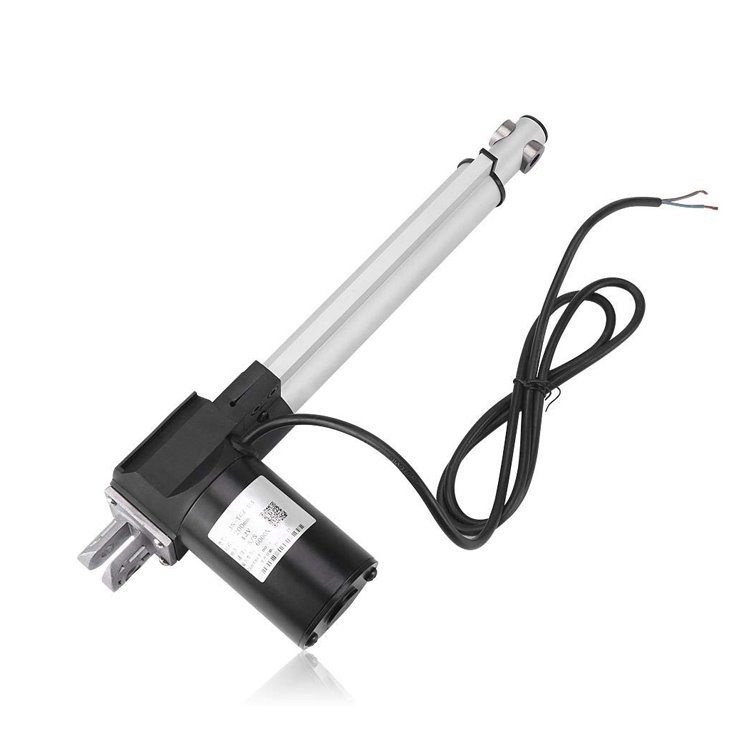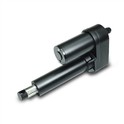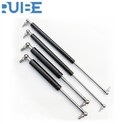In the realm of modern engineering and automation, electric linear actuators have emerged as indispensable components, finding applications in a wide range of industries. As a leading supplier of electric linear actuators, I often encounter inquiries about the static load capacity of these devices. In this blog post, I aim to provide a comprehensive understanding of what static load capacity means, why it is crucial, and how it impacts the performance of electric linear actuators.
Understanding Static Load Capacity
Static load capacity refers to the maximum amount of weight or force that an electric linear actuator can support when it is in a stationary position, without any movement. It is a fundamental specification that determines the actuator's ability to handle a specific load under static conditions. This capacity is typically measured in units of force, such as Newtons (N) or pounds-force (lbf).
The static load capacity of an electric linear actuator is influenced by several factors, including the design of the actuator, the materials used in its construction, and the type of bearings and gears employed. Actuators with larger cross-sectional areas and stronger materials generally have higher static load capacities. Additionally, the quality of the bearings and gears can significantly affect the actuator's ability to distribute the load evenly and prevent premature wear and failure.
Importance of Static Load Capacity
The static load capacity of an electric linear actuator is a critical factor to consider when selecting an actuator for a particular application. Choosing an actuator with a static load capacity that is too low for the intended load can result in several issues, including:
- Premature Wear and Failure: When an actuator is subjected to a load that exceeds its static load capacity, the internal components, such as the bearings, gears, and screw, can experience excessive stress and wear. This can lead to premature failure of the actuator, reducing its lifespan and increasing the risk of downtime and maintenance costs.
- Reduced Performance: An actuator operating near or beyond its static load capacity may not be able to achieve the desired speed, accuracy, or repeatability. The excessive load can cause the actuator to move more slowly, produce more noise, and experience greater positional errors, which can negatively impact the overall performance of the system.
- Safety Risks: In applications where the actuator is used to support heavy loads or perform critical functions, such as in industrial machinery or medical equipment, exceeding the static load capacity can pose significant safety risks. A failure of the actuator could result in the collapse of the load, causing damage to the equipment and potentially injuring personnel.
Determining the Required Static Load Capacity
To determine the required static load capacity for an electric linear actuator, it is essential to consider the following factors:
- Load Weight: The weight of the load that the actuator will be required to support is the most obvious factor to consider. It is important to accurately measure or estimate the weight of the load, including any additional forces or moments that may be acting on the actuator, such as friction, inertia, or external forces.
- Load Distribution: The way the load is distributed across the actuator can also affect the required static load capacity. If the load is concentrated at a single point or unevenly distributed, the actuator may need to have a higher static load capacity to prevent overloading and premature failure.
- Safety Factor: It is generally recommended to apply a safety factor when selecting an actuator to account for uncertainties in the load, such as variations in the weight, distribution, or dynamic forces. A safety factor of 1.5 to 2 times the estimated load is commonly used to ensure that the actuator can handle the load safely and reliably.
Applications and Static Load Capacity Requirements
The static load capacity requirements for electric linear actuators vary depending on the specific application. Here are some common applications and the typical static load capacity ranges required:
- Industrial Automation: In industrial automation applications, such as conveyor systems, robotic arms, and packaging machinery, electric linear actuators are often used to move heavy loads with high precision and speed. The static load capacity requirements for these applications can range from a few hundred Newtons to several thousand Newtons, depending on the size and weight of the load.
- Medical Equipment: In medical equipment, such as hospital beds, patient lifts, and surgical tables, electric linear actuators are used to provide smooth and precise movement for patient comfort and safety. The static load capacity requirements for these applications are typically lower, ranging from a few tens of Newtons to a few hundred Newtons.
- Home Automation: In home automation applications, such as electric sofas, TV lifts, and window blinds, electric linear actuators are used to provide convenient and automated control of various household devices. The static load capacity requirements for these applications are generally lower, ranging from a few Newtons to a few tens of Newtons.
For example, if you are looking for a Linear Actuator for Electric Sofa, you may need an actuator with a static load capacity of around 500 - 1000 N to support the weight of the sofa and any occupants. On the other hand, a High Speed Linear Actuator used in a high-speed industrial application may require a much higher static load capacity to handle the dynamic forces and loads associated with high-speed operation. Similarly, a Linear Actuator for Tv Lift may need a static load capacity of around 200 - 500 N to support the weight of the TV and the lift mechanism.
Selecting the Right Electric Linear Actuator
When selecting an electric linear actuator, it is important to choose an actuator with a static load capacity that is appropriate for the intended application. Here are some tips to help you select the right actuator:


- Understand the Application Requirements: Before selecting an actuator, it is essential to have a clear understanding of the application requirements, including the load weight, load distribution, speed, accuracy, and environmental conditions. This will help you determine the required static load capacity and other specifications of the actuator.
- Consult with an Expert: If you are unsure about the static load capacity requirements for your application or need help selecting the right actuator, it is recommended to consult with an expert in the field. An experienced actuator supplier or engineer can provide valuable advice and guidance based on their knowledge and expertise.
- Consider the Actuator's Specifications: In addition to the static load capacity, it is important to consider other specifications of the actuator, such as the stroke length, speed, accuracy, repeatability, and duty cycle. These specifications can also have a significant impact on the actuator's performance and suitability for the application.
- Choose a Reliable Supplier: Selecting a reliable supplier is crucial to ensure that you receive a high-quality actuator that meets your requirements and is backed by excellent customer support. Look for a supplier with a proven track record of providing reliable products and services, and who offers a warranty and technical support.
Conclusion
The static load capacity of an electric linear actuator is a critical factor to consider when selecting an actuator for a particular application. Understanding the concept of static load capacity, its importance, and how to determine the required static load capacity can help you choose the right actuator for your needs and ensure the reliable and efficient operation of your system.
As a leading supplier of electric linear actuators, we offer a wide range of actuators with different static load capacities to meet the diverse needs of our customers. Our actuators are designed and manufactured to the highest quality standards, using the latest technology and materials to ensure reliability, performance, and durability.
If you have any questions or need assistance in selecting the right electric linear actuator for your application, please do not hesitate to contact us. Our team of experts is ready to provide you with the information and support you need to make an informed decision. We look forward to the opportunity to work with you and help you find the perfect actuator solution for your project.
References
- "Electric Linear Actuators: Principles, Applications, and Design Considerations." Mechatronics Handbook, edited by Mohamed Gad-el-Hak, CRC Press, 2007.
- "Linear Actuator Selection Guide." Parker Hannifin Corporation, 2019.
- "Understanding Linear Actuator Specifications." Thomson Industries, Inc., 2020.






